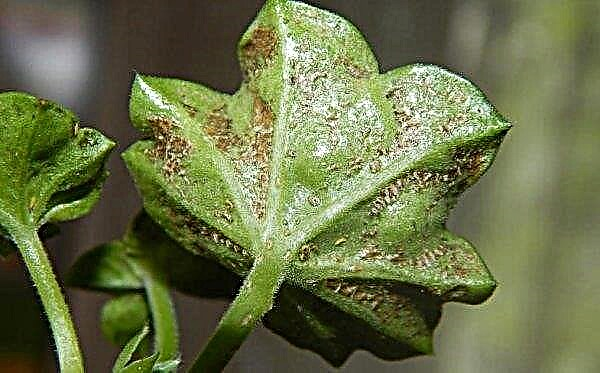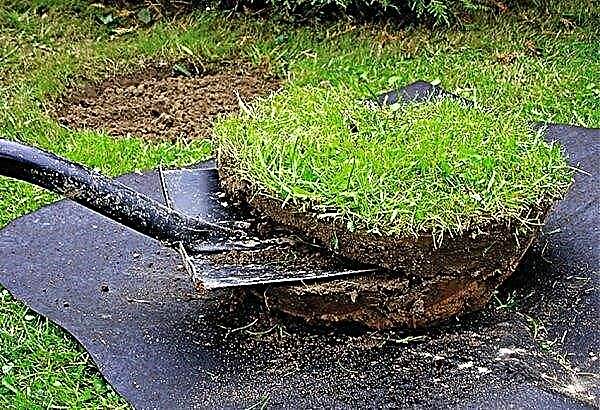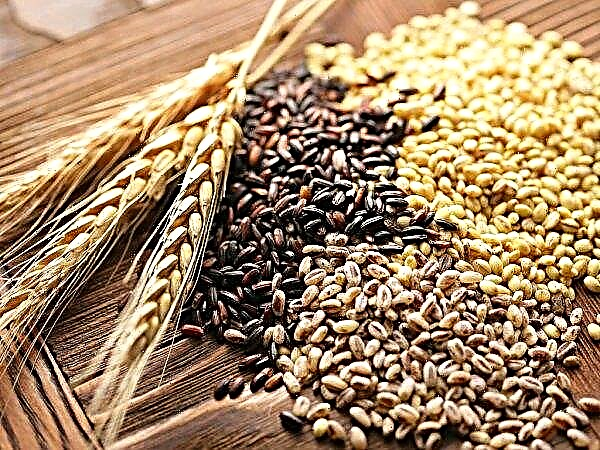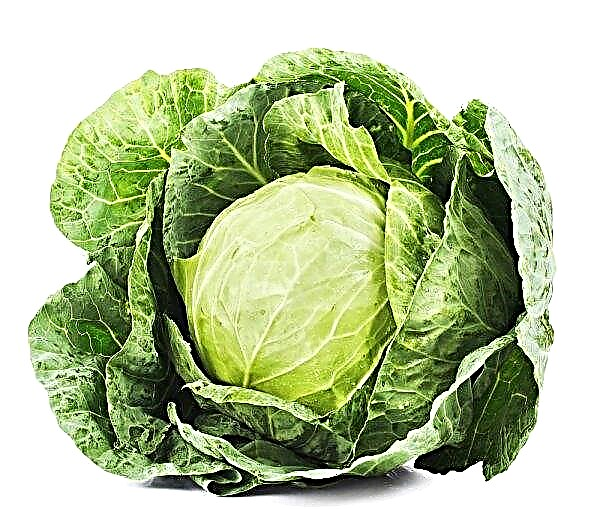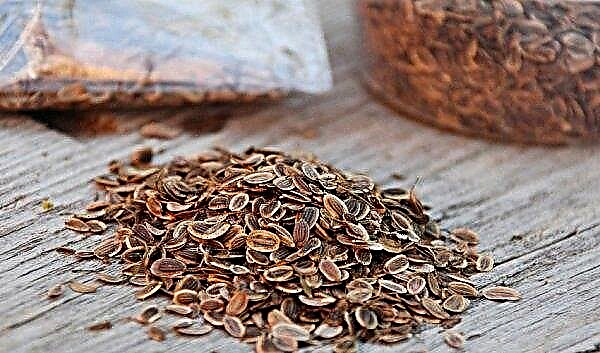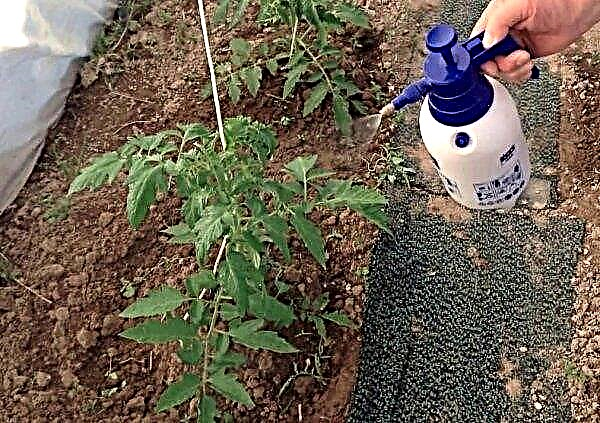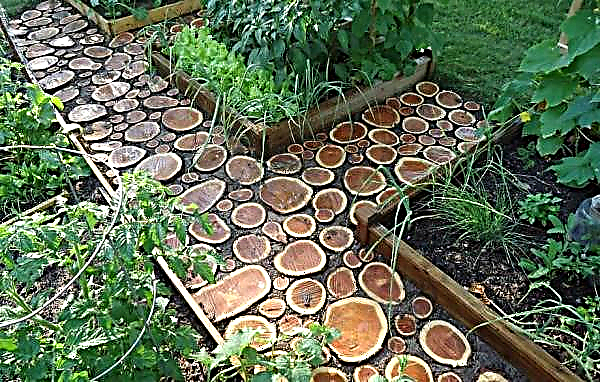Late blight is a contagious plant disease. The predominant family of the Paslyonov family is striking, but it can thrive on other cultures, and cucumbers are no exception. If the disease is not eradicated at the initial stage, then it can destroy the entire crop. We will talk about the signs of infection, methods of control and prevention in the article.
What is late blight
Phytophthora is a fungus that lives, develops and parasitizes on plants. It has about 100 known species, but scientists suggest that there are still almost 500 undiscovered varieties.
This fungus is dangerous in that it is able to completely destroy the affected plant. It is transported quickly and over long distances.
This happens in the following ways:
- from an infected plant to a healthy one;
- the wind carries spores for miles;
- rain flushes the infection off the leaves, and the fungus enters the soil, where it infects new plants;
- spores remain in affected tubers, fruits, or roots remaining in the ground.
Important! The most favorable conditions for the active development of late blight are high humidity (over 75%) and not too high air temperature (from + 10 ° to + 25 ° C).
Causes and signs of development on cucumbers
Phytophthora affects cucumbers for such reasons:
- sudden changes in temperature;
- weather conditions in which high humidity and cool air are combined;
- excessive irrigation with stagnation of water;
- thickened planting;
- excessive shade, in which the soil does not dry out;
- an excess of lime in the soil;
- the seeds are already infected with the fungus before planting;
- transmission of infection from other diseased plants;
- weakened immunity of cucumbers due to improper care, growth on depleted soil, lack of fertilizing;
- greenhouse conditions with stagnation of moist air and without ventilation;
- poor-quality harvesting of the last harvest from the site, after which the roots infected with late blight remained rotted in the ground.

- the appearance of small brownish-brown spots on the leaves and stems;
- a thin white thick cobweb may appear on the back of the leaves;
- foliage curls, darkens and falls;
- growth slows down;
- ovaries cease to form;
- brownish soft spots on the fruits, slightly deepened, similar to putrid ones;
- spots grow over time, and rot spreads to the entire fetus;
- the whole bush can be affected, brown;
- rotting areas exude an unpleasant odor.
Did you know? Until the middle of the twentieth century, Europe did not know anything about late blight. The fungus came to us from across the ocean and immediately caused enormous damage to the potato fields, destroying the crop and provoking famine in Ireland in 1847.
Methods of struggle
Sometimes, even with proper care of the crops on the site, it is impossible to prevent the occurrence of late blight. But if you do not fight the infection, it will quickly spread to other plants, penetrate the soil and destroy all plantings.
First of all, to combat the disease, you need to follow the correct care regimen:
- Water the cucumber bushes as the top soil layer dries, avoiding stagnation of water. Accordingly, it is better not to use watering with a hose, but to use the sprinkling method or to water each plant from a bucket or watering can. Thus, it is easier to control the amount of water supplied to the bushes.
- Avoid thickening of landings. Plant cucumbers at sufficient intervals between each other and between rows. Weed aisles regularly, destroying weeds.
- Do not lime the soil on the site.
- Ventilate the greenhouse regularly to prevent moisture retention.
- Loosen the soil, ensuring its breathability.
- Conduct regular fertilizing with fertilizers, contributing to the formation of strong immunity in cucumbers and thus increasing their resistance to infections.
- Destroy diseased plants at the first sign of late blight.

However, if late blight has already appeared on the plantings, then you have to use special tools and drugs to combat the fungus.
Chemicals
The safest remedy suitable for the destruction of late blight is Bordeaux liquid: cucumber bushes can be processed with a solution prepared on its basis. However, the dosage must be strictly observed, because too concentrated a mixture can burn the leaves.
A method of preparing a solution of Bordeaux liquid:- First treatment: Dilute 20 ml of Bordeaux liquid into 3 liters of water (0.5%).
- Second treatment: Dilute 20 ml of Bordeaux liquid into 4 l of water (4%).
 Chemical products for the control of late blight:
Chemical products for the control of late blight:- "Alufit";
- "Barrier";
- "Ridomil MC";
- Oksikhom;
- "Tattoo";
- "Bravo";
- "Antracol";
- "Barrier";
- "Quadrice";
- "Ordan";
- Home.
In addition to poisons, biological preparations are effective against phytophthora:Important! These drugs are toxic and dangerous to humans, can cause severe poisoning. Cucumbers can be sprayed no later than 2 weeks before harvesting, and processing is best done in the absence of wind.
- "Fitosporin";
- Trichodermin.
These tools are safer. In addition, the first of them can be used not only for processing bushes, but also for spilling land.
An analogue of “Fitosporin” may be an infusion of fungus of a wood tinder fungus. 100 g of mushroom pulp is crushed (for example, through a meat grinder) and 10 l of boiling water are poured, allowed to cool, after which the bushes are filtered and sprayed. Processing can be carried out every 10 days.
Against late blight, a simple pharmacy drug - "Furacilin" has proven itself well. The drug has antimicrobial and antifungal activity, is inexpensive. To prepare the solution, you need to dissolve 10 tablets of the substance in a bucket of water and spray the beds.

Folk remedies
Folk remedies are safe to use and diverse, they can be used without problems at home.
Garlic infusion with potassium permanganate
To prepare the infusion, take 100 g of chopped garlic (any part of it: leaves, arrows, heads) and pour 1 cup of water. Such a composition should be infused 24 hours. After this time, the mixture needs to be filtered and garlic liquid added along with 2 g of potassium permanganate in 10 liters of water. The frequency of spraying is from 10 to 15 days.
Wood ash
Ash can be used only after young cucumbers have already gained a little strength after transplanting to a permanent place.
The solution is prepared as follows:
- 500 g of ash should be diluted in 10 liters of water.
- Allow the mixture to brew for 3 days.
- While the mixture is infused, it is interfered periodically.
- After 3 days, another 20 liters of water and 40 g of laundry soap are added to the mixture.
Did you know? Tiny thorns on young cucumbers are of practical importance for the plant: they remove excess water from the fruit. At dawn, for example, at the tips of the spikes you can see small droplets.
Yeast
- 100 g of yeast are added to 10 l of water.
- They let it brew for a day.
- After time, add 30 ml of iodine.
Whey or kefir
- 1 liter of kefir or whey should be diluted in 10 liters of water.
- Allow wandering infusion for 2 days.
- After time, mix well and process the cucumbers.
How to cultivate the earth after cucumbers infected with late blight
To destroy late blight in the ground, the site must be carefully treated, since the fungus is very viable.
Agrotechnical methods:
- Thoroughly remove any debris from fruits and plants in the fall. Infected rotting fruit left in the ground will continue to spread the infection.
- After harvesting, dig the soil deeply.

In the spring before planting, the soil must be decontaminated in any way:
- to burn;
- pour boiling water;
- shed with potassium permanganate, Bordeaux liquid or copper sulfate;
- treated with Fitosporin.
Disease prevention
Late blight is a disease that is difficult to treat, therefore it is better to prevent its occurrence than to deal with the consequences later.
Prevention Methods:
- seed disinfection before planting with potassium permanganate, beard liquid, vitriol, iodine solution;
- seed treatment "Fitosporin";
- compliance with all cultivation rules - light breathable soil, non-thickened planting, normal humidity and temperature;
- removal of any shoots, fruits and leaves at the first sign of fungal infection;
- spraying seedlings and bushes with saline (1 cup of edible salt per bucket of water);
- processing of all cucumbers with any disinfectant after detecting the slightest signs of late blight.
Is it possible to eat infected cucumbers
To date, there is no evidence that fruits affected by late blight are dangerous to human health. However, there is no evidence that it is safe.
Fungal diseases of plants are not transmitted to humans, however, some people suffer from allergies to fungal spores and therefore can provoke an acute allergic reaction by eating infected cucumbers.
In any case, fruits with traces of late blight are not so tasty, have a slightly putrid smell and do not differ in attractiveness: the decision to use or not such a product is only for you to take.
Resistant varieties
Varieties of cucumbers that are resistant to late blight:
- Adam F1;
- Aquarius;
- Hector F1;
- Delpina F1.
Did you know? Phytophthora is so voracious that it can destroy all cultivated plants! There is no continent on Earth, except Antarctica, where phytophthora would not be active.
Blight on cucumbers is a dangerous fungal disease that can destroy all plantings. It is difficult to treat, it requires immediate removal of the affected areas and subsequent treatment with disinfectants of all the other cucumber bushes. Phytophthora is easier to prevent on your site, observing the rules of agricultural technology, than then to deal with it.



